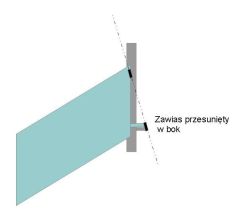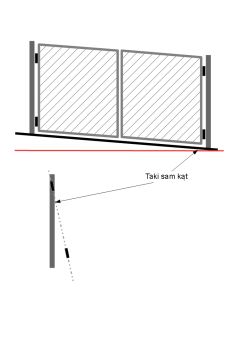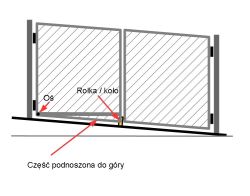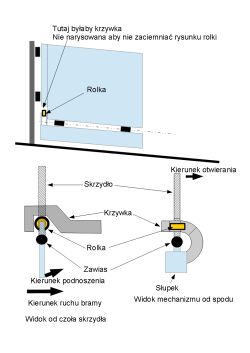Hello forum,
I would like to install a bi-fold gate, controlled automatically. Due to the fact that the gate will be installed on a rather large side slope, I cannot install a normal straight gate.
It seems to me that the best solution would be to build the gate to size, where the leaf that is higher up, in order to open inwards, will have to have its lower part lifted upwards to allow it to open on the slope inwards. I hope you understand what I mean? .
.
So I would need a controller to control the opening of the left and right sashes and the lower part of one sash that would open upwards.
Do you have any ideas on how to achieve this functionality?
I would be grateful for any hints
AI: What are the approximate dimensions and weight of the gate leaves and this lifting lower part? This will help in selecting the appropriate actuator and controller. .
The full width of the gate will be about 4-5m, so each leaf half that size. As for the weight of the wings, I haven't chosen the gate itself yet, so it's hard for me to say specifically here.
AI: How would you like to control the gate - do you care about a remote control, an app, or perhaps integration with a smart home system? Do you have any additional requirements for the functionality of the controller? .
I would like a remote control, an app and preferably the ability to control relay open/close from an external smart home system.
I would like to install a bi-fold gate, controlled automatically. Due to the fact that the gate will be installed on a rather large side slope, I cannot install a normal straight gate.
It seems to me that the best solution would be to build the gate to size, where the leaf that is higher up, in order to open inwards, will have to have its lower part lifted upwards to allow it to open on the slope inwards. I hope you understand what I mean?
So I would need a controller to control the opening of the left and right sashes and the lower part of one sash that would open upwards.
Do you have any ideas on how to achieve this functionality?
I would be grateful for any hints
AI: What are the approximate dimensions and weight of the gate leaves and this lifting lower part? This will help in selecting the appropriate actuator and controller. .
The full width of the gate will be about 4-5m, so each leaf half that size. As for the weight of the wings, I haven't chosen the gate itself yet, so it's hard for me to say specifically here.
AI: How would you like to control the gate - do you care about a remote control, an app, or perhaps integration with a smart home system? Do you have any additional requirements for the functionality of the controller? .
I would like a remote control, an app and preferably the ability to control relay open/close from an external smart home system.









